The Quantum Dinner
Die Wissenschaft befindet sich mitten in der sogenannten zweiten Quantenrevolution, deren Ziel die Nutzbarmachung grundlegender quantenphysikalischer Effekte in neuartigen Anwendungen ist. Als AGyouLeaP sehen wir dies auch als eines der zentralen Zukunftsthemen der gesamten Gesellschaft an und wollen daher über aktuelle spannende Entwicklungen und Erkenntnisse in dem Feld berichten und diskutieren. Daher laden wir alle Wissenschaftler*innen im Oktober ein unsere neue Online-Vortragsreihe zu Quantentechnologien und -wissenschaften zu besuchen:
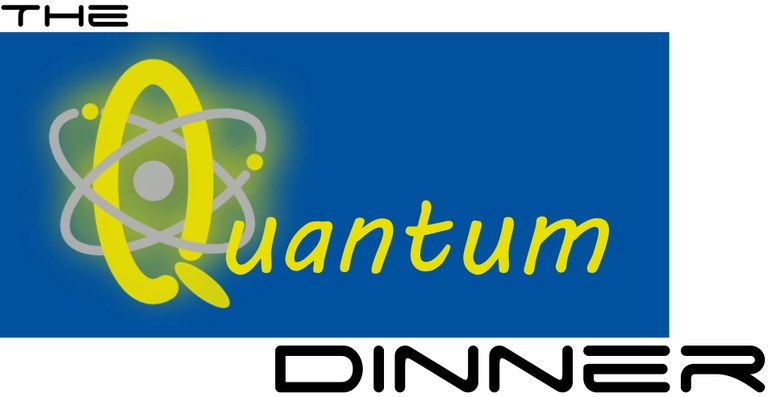
Jeden Abend um 17:15 Uhr präsentieren wir einen Vortrag zu aktuellen Themen im Bereich der Quantenphysik und Quantentechnologien, an welchem kostenfrei über Zoom teilgenommen werden kann. Im Anschluss können unter unserer Moderation Fragen gestellt und diskutiert werden. Die Vorträge sollen dabei insbesondere auch Studierende und Promovierende ansprechen. Der erste Vortrag findet am 6. Oktober im Rahmen des Kick-Off Meetings der AGyouLeaP in Bad Honnef statt (Online zugänglich im live-stream), gefolgt von 12 weiteren Vorträgen bis zum 22. Oktober. Wir freuen uns möglichst viele Interessierte willkommen heißen zu dürfen.
Die Zoom Links finden Sie an den Vorträgen!
Das Passwort für alle Vorträge ist "theQD"
Zum Fragen stellen nutzen Sie bitte entweder das "Hand heben" oder "Fragen und Antworten" (Wir lesen die Frage dann vor).
Programm
05.10.20 - Dieter Meschede - Quantum 2.0 - Challenges for Science and Society
|
|
Quantum technology is considered one of the most promising areas of new, potentially ground breaking technologies. For the scientific community as well as for our societies this expectation raises superb opportunities combined with significant riscs. I will try to put quantum technology into perspective, give examples and discuss strategies to make a success likely. |
07.10.20 - Kai Müller - Dynamics of non-classical light generation based on semiconductor quantum dots
Walter Schottky Institut - Technische Universität München
ZOOM: https://zoom.us/j/92451919058
Passwort: theQD
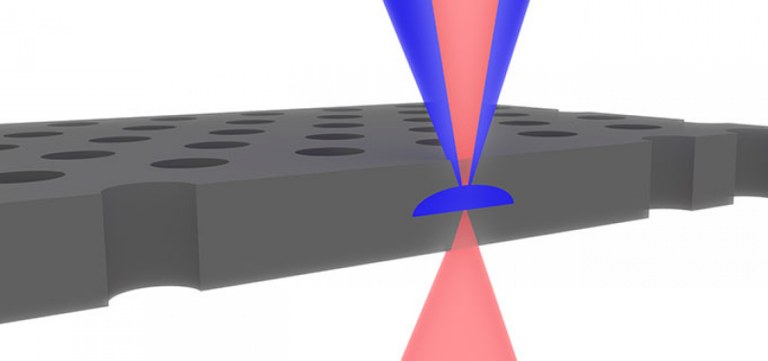 |
Due to their excellent optical properties, such as fast emission rates and nearly transform-limited linewidth, semiconductor quantum dots are promising for applications in photonic quantum technologies and for testing fundamental quantum-optical predictions. This talk addresses the dynamics of generating non-classical light from resonantly driven quantum systems. Specifically, the fundamental limits of the single-photon purity and photon indistinguishability for resonantly driven two-level systems and three-level ladder systems will be discussed, as well as the origin of antibunching under weak cw excitation. [1] A. Fischer, et al., Nature Physics 13, 649-654 (2017). [2] Hanschke et al., npj Quantum Information 4, 43 (2018). [3] Schöll et al., arXiv:2006.05476 (2020). [4] Hanschke et al., arXiv:2005.11800 (2020). |
08.10.20 - Alexander Szameit - Integrated photonic circuits for classical and quantum light
Universität Rostock
ZOOM: https://zoom.us/j/96083026833
Passwort: theQD
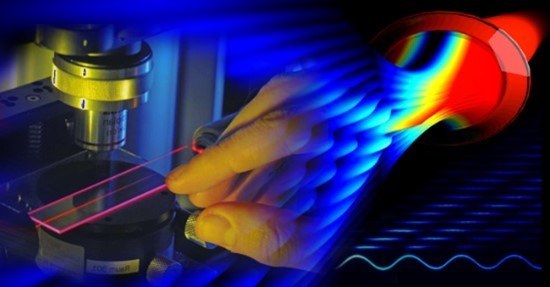 |
Integrated photonic devices fabricated by femtosecond lasers exhibit numerous advantages regarding stability, robustness, and miniaturization. In particular in the field of quantum photonics they provide an excellent testbed for exploring novel physical effects that may play a significant role in innovative applications. In this presentation, I will discuss three recently explored phenomena implemented in laser-written integrated photonic devices: Photonic Boson sampling as an inherent quantum computation task, the observation of non-Hermitian PT-symmetric quantum optics as an extension of common Hermitian quantum optics, and three-dimensional quantum walks on complex graphs exploring higher-dimensional physics. |
12.10.20 - Eleni Diamanti - Secure communications in quantum networks
CNRS - Sorbonne Université
ZOOM: https://zoom.us/j/96664191117
Passwort: theQD
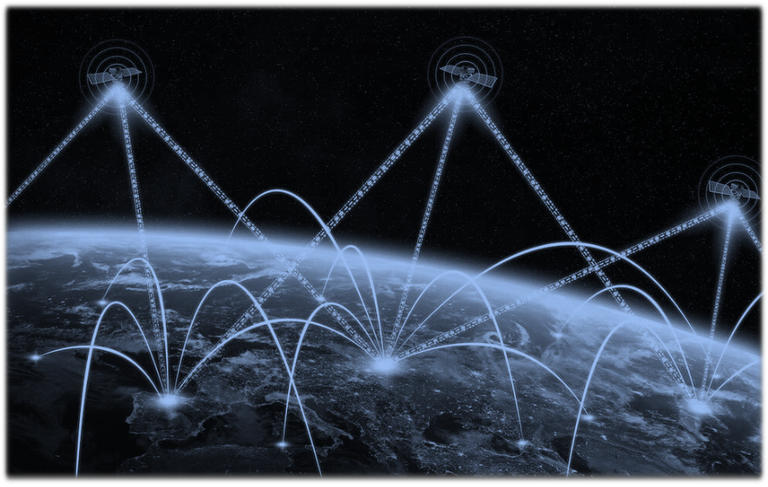 |
Quantum technologies have the potential to improve in an unprecedented way the security and efficiency of communications in network infrastructures. In this talk, we discuss the current landscape in quantum communication and cryptography, and focus in particular on photonic implementations, using encoding in discrete or continuous properties of light, of central quantum network protocols, enabling secret key distribution, verification of multiparty entanglement and transactions of quantum money, with security guarantees impossible to achieve with only classical resources. We also describe current challenges in this field and our efforts towards the miniaturization of the developed photonic systems, their integration into telecommunication network infrastructures, including with satellite links, as well as the practical demonstration of novel protocols featuring a quantum advantage for a wide range of tasks. These advances enrich the resources and applications of the emerging quantum networks that will play a central role in the context of future global-scale quantum-safe communications. |
13.10.20 - Thomas Strohm - Quantum technology in industry: Challenges and Opportunities
Robert Bosch GmbH
ZOOM: https://zoom.us/j/99281712904
Passwort: theQD
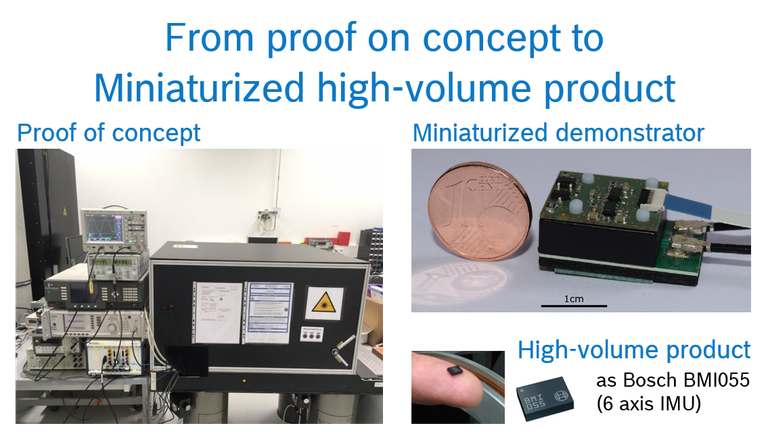 |
Quantum Technologies become increasingly important for technology companies. Bosch since a few years has various Quantum Technologies projects.
We commence the talk by giving a brief overview of the company and explaining the motivation for Bosch to engage in Quantum Technologies. We cover Bosch’s Quantum Technologies research activities as well as our extensive activities in various Quantum Technologies initiatives, networks, and consortia throughout Europe and our cooperation partners.
Then, we dedicate the main part of the talk to Bosch’s five major Quantum Technology projects. We present these projects, give the business context and explain the technological principles.
We conclude the talk with an outlook on the success factors that in our opinion are key to make Quantum Technologies an economic success.
|
14.10.20 - Anna Pappa - Advantages of multipartite entanglement in quantum networks
Technische Universität Berlin
ZOOM: https://zoom.us/j/96034734500
Passwort: theQD
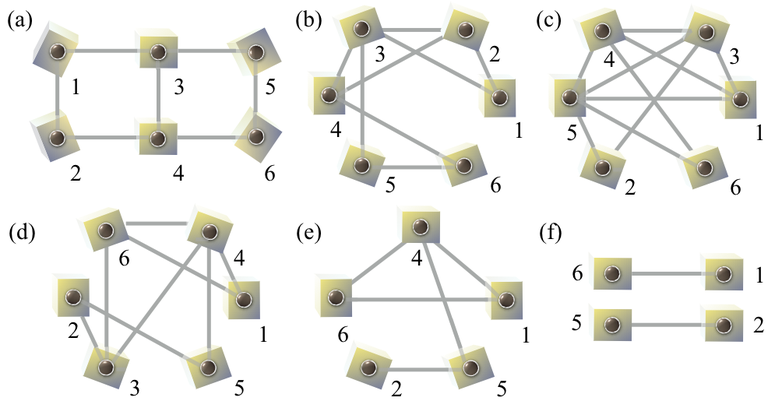 |
Quantum communication between distant parties is based on suitable instances of shared entanglement. During this talk, I will show how sharing multipartite entangled states allows us to achieve tasks that are inefficient or impossible to achieve otherwise. The underlying method differs from standard repeater network approaches in that it uses a graph state instead of maximally entangled pairs to establish long-distance communication. I will explain how graph theoretic tools like local complementation allow us to treat quantum states as sets of equivalent states and examine examples of network architectures, where deploying these techniques provides an advantage. |
15.10.20 - Peter Michler - Quantum dots for photonic quantum technologies
Universität Stuttgart
ZOOM: https://zoom.us/j/96421920102
Passwort: theQD
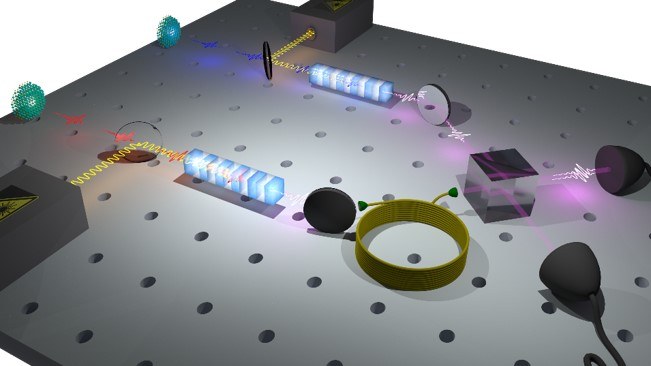 |
This talk aims to provide a general introduction to the physics of quantum dots and an overview of recent exciting developments in the field of semiconductor quantum optics with quantum dots (QDs). Semiconductor QDs have been identified as promising hardware for implementing the basic building blocks of novel quantum technologies, such as quantum computing, quantum communication, quantum metrology and quantum sensing. This is because individual charge carriers in QDs can be generated, manipulated, and coherently controlled. Moreover, miniaturized and integrated solutions with existing semiconductor technology are foreseeable. The topics addressed in this tutorial are two-photon interference with remote QDs, quantum dots emitting in the telecom O- and C-bands and quantum dots embedded in photonic integrated circuits. |
19.10.20 - Elke Neu-Ruffing - Seeing the nanoworld with diamond quantum sensors
Technische Universität Kaiserslautern
ZOOM: https://zoom.us/j/96173638398
Passwort: theQD
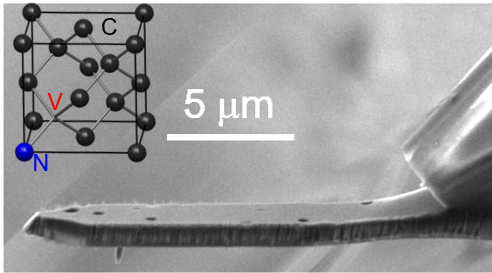 |
Individual quantum systems are extremely sensitive sensors e.g. for magnetic fields. The strength of such quantum sensors is to harness quantum mechanics for ultimate sensitivity and versatility while simultaneously atomically small quantum systems boost spatial resolution in imaging. We employ point defects in diamond crystals, so called color centers, as nanoscale sensors. Electrons bound to such defects provide highly controllable spins and create bright luminescence that enables us to use even individual color centers. Applications of the sensors include e.g. material science where magnetic nanostructures are characterized to life science were currents in living organisms are detected. |
20.10.20 - Jürgen Stuhler - Time for optical clocks
TOPTICA Photonics
ZOOM: https://zoom.us/j/91637544048
Passwort: theQD
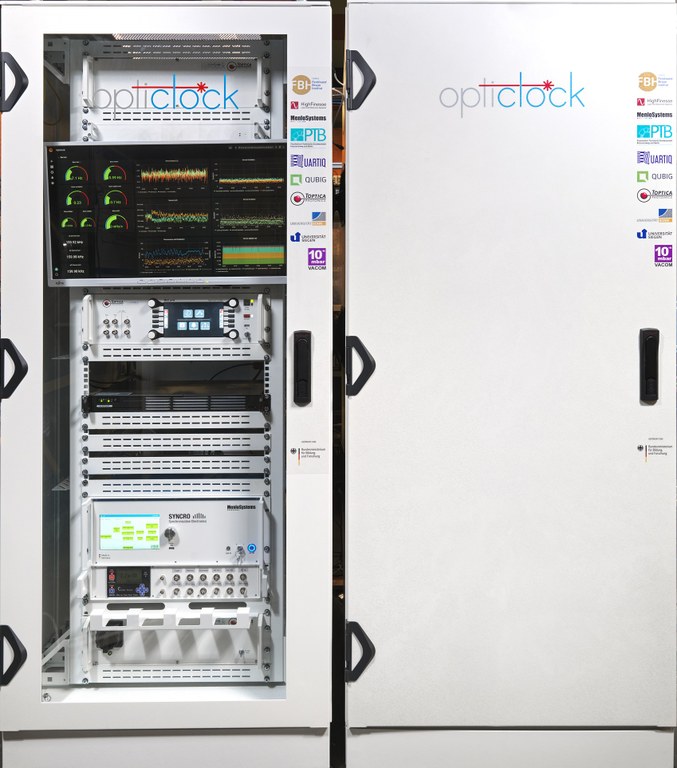 |
Today’s most precise clocks are based on atomic optical reference transitions. Their unprecedented precision opens up numerous applications like improved network synchronization, navigation, geodesy or fundamental tests of physics. I will utilize the quantum dinner time to give a general overview on optical clocks and present the German quantum technology pilot project „opticlock“. In this BMBF funded collaborative project, six companies, two universities, one research institute, and one federal institute have realized together a transportable and user-friendly optical clock using one single trapped ion as optical reference. |
21.10.20 - Carsten Schuck - Integrated Quantum Technology with Single-Photon Sources, Circuits and Detectors
Universität Münster
ZOOM: https://zoom.us/j/93735607772
Passwort: theQD
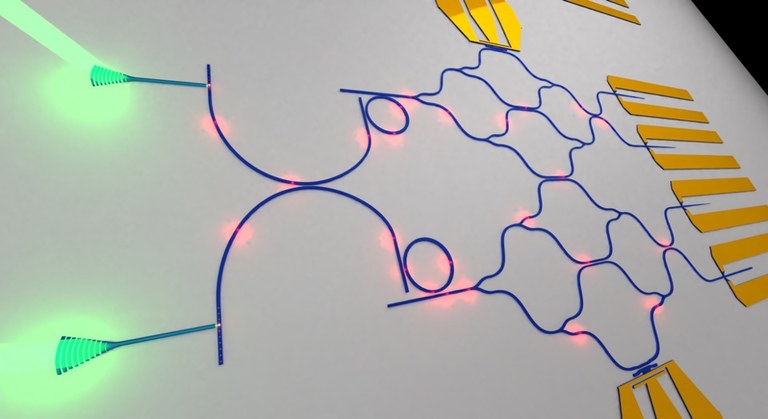 |
Integrated quantum photonics holds great promise for increasing the complexity and system size of quantum communication, sensing and information processing schemes through leveraging modern nanofabrication processes for replicating nanoscale devices in large numbers with high reproducibility. In this talk I will present progress towards realizing essential building blocks for implementing a photonic quantum technology platform on silicon chips that integrates solid-state quantum emitters, such as NV-centers in nanodiamonds, nanophotonic circuit components with active and passive optical functionality, as well as highly efficient and low-noise waveguide-integrated superconducting nanowire single-photon detectors. |
22.10.20 - Andreas Wallraff - Building Superconducting Quantum Processors
ETH Zürich
ZOOM: https://zoom.us/j/98430511769
Passwort: theQD
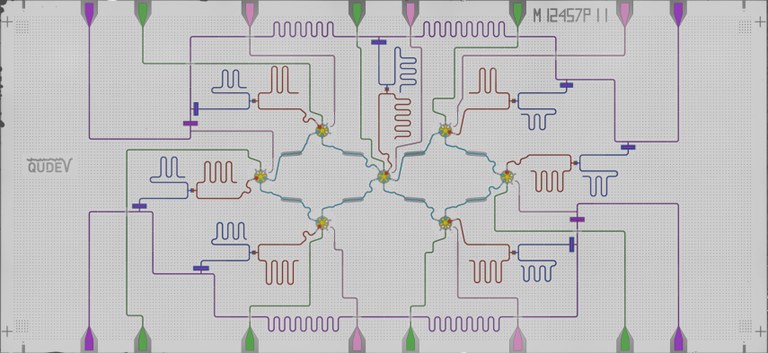 |
Superconducting circuits are ideally suited for studying quantum phenomena at the macroscopic scale. Since complex circuits, containing a few tens to a few hundreds of elements, can be designed, fabricated, and operated with relative ease, they are one of the prime contenders for realizing quantum computers. Now academic and industrial labs work on realizing universal fault-tolerant quantum computaters as well as on implementing algorithms on noisy intermediate-scale quantum (NISQ) hardware. Building systems, which can address commercially relevant computational problems, however, still requires significant conceptual and technological progress. In this talk, I will begin by introducing the quantum physics of superconducting circuits [1] which underlies the hardware used in superconducting quantum processors. I will then present our recent progress [2] towards realizing quantum error correction in superconducting circuits. Finally, I will discuss the challenges on the route toward large-scale quantum processors based on superconducting circuits. [1] A. Blais et al., arXiv:2005.12667 (2020) [2] C. K. Andersen et al., Nature Physics 16, 875–880 (2020) |
